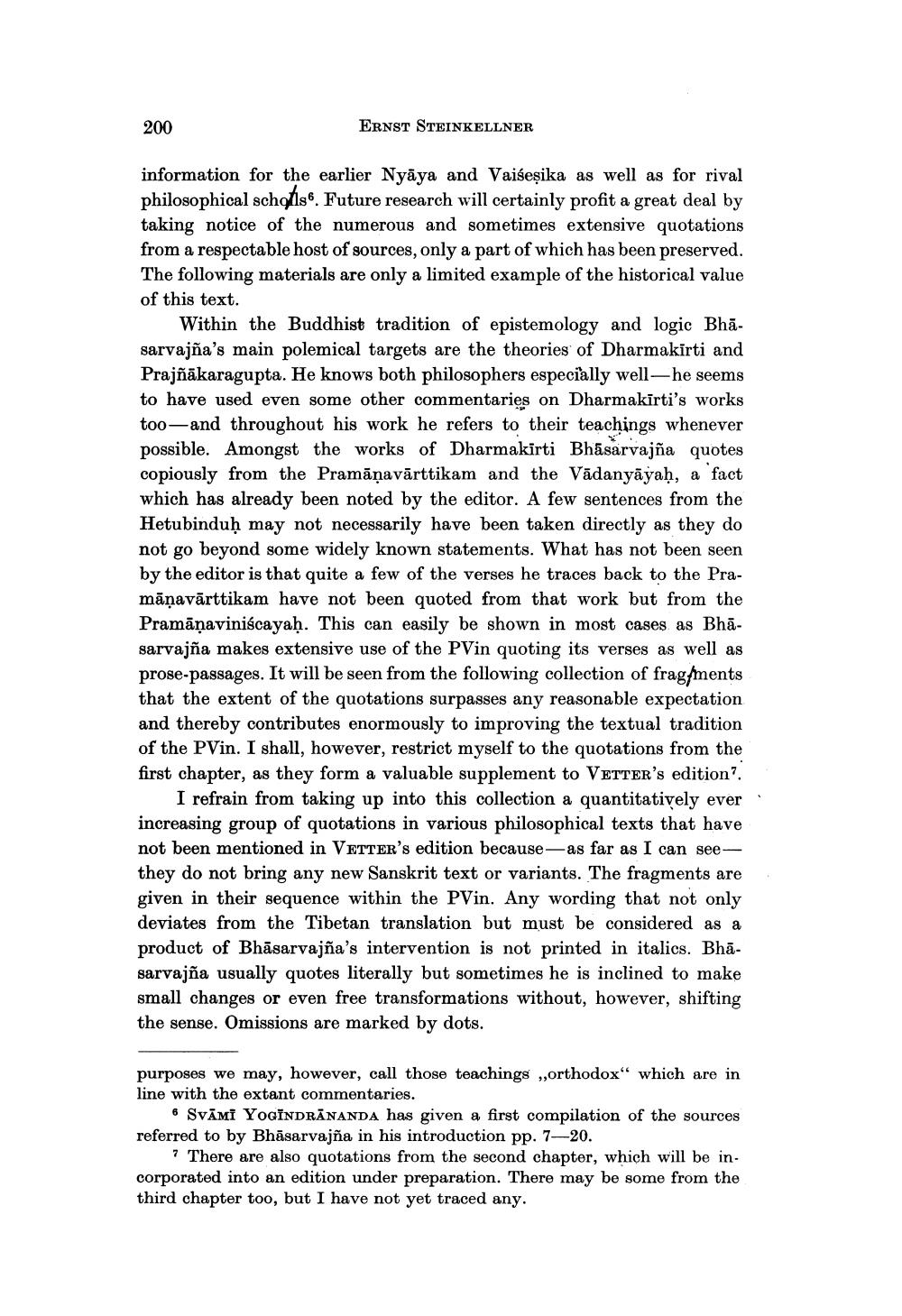________________
200
ERNST STEINKELLNER
information for the earlier Nyāya and Vaiseșika as well as for rival philosophical schodis6. Future research will certainly profit a great deal by taking notice of the numerous and sometimes extensive quotations from a respectable host of sources, only a part of which has been preserved. The following materials are only a limited example of the historical value of this text.
Within the Buddhist tradition of epistemology and logic Bhāsarvajña's main polemical targets are the theories of Dharmakirti and Prajñākaragupta. He knows both philosophers especially well—he seems to have used even some other commentaries on Dharmakīrti's works too-and throughout his work he refers to their teachings whenever possible. Amongst the works of Dharmakirti Bhāsarvajña quotes copiously from the Pramāņavārttikam and the Vādanyāyaḥ, a fact which has already been noted by the editor. A few sentences from the Hetubinduḥ may not necessarily have been taken directly as they do not go beyond some widely known statements. What has not been seen by the editor is that quite a few of the verses he traces back to the Pramāņavārttikam have not been quoted from that work but from the Pramāņaviniscayaḥ. This can easily be shown in most cases as Bhāsarvajña makes extensive use of the PVin quoting its verses as well as prose-passages. It will be seen from the following collection of fragments that the extent of the quotations surpasses any reasonable expectation and thereby contributes enormously to improving the textual tradition of the PVin. I shall, however, restrict myself to the quotations from the first chapter, as they form a valuable supplement to VETTER's edition?
I refrain from taking up into this collection a quantitatively ever increasing group of quotations in various philosophical texts that have not been mentioned in VETTER's edition because-as far as I can seethey do not bring any new Sanskrit text or variants. The fragments are given in their sequence within the PVin. Any wording that not only deviates from the Tibetan translation but must be considered as a product of Bhāsarvajña's intervention is not printed in italics. Bhāsarvajña usually quotes literally but sometimes he is inclined to make small changes or even free transformations without, however, shifting the sense. Omissions are marked by dots.
purposes we may, however, call those teachings „orthodox" which are in line with the extant commentaries.
6 SVĀMI YOGINDRĀNANDA has given a first compilation of the sources referred to by Bhāsarvajña in his introduction pp. 7-20.
? There are also quotations from the second chapter, which will be incorporated into an edition under preparation. There may be some from the third chapter too, but I have not yet traced any.




